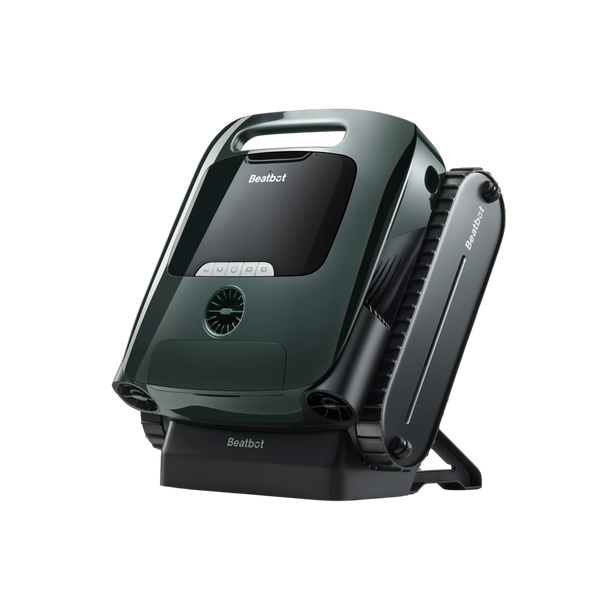Can You Fill a Swimming Pool With Well Water?
Filling your pool with well water saves money and gives you control over your water supply. But hold up - well water brings its own set of challenges to the pool party. Your well needs enough capacity to handle the job, and the water quality must meet specific standards for safe swimming.Pool pros often field questions about well water safety. Truth is, plenty of pool owners use well water successfully. The key? Understanding what you're working with before that first drop hits your pool. Well water varies wildly from one location to another, packing different minerals and contaminants that affect your pool's chemistry.Skip the guesswork - testing your well water before filling saves you from expensive headaches later. Let's dig into what makes well water work (or not) for your pool.
Table of content

Understanding Your Well's Capacity
Your well needs muscle to fill a pool. Most residential wells pump 5-20 gallons per minute. Sounds decent, right? But filling a 15,000-gallon pool at 10 GPM takes about 25 hours straight. That's asking a lot from your well.Watch your well's recovery rate. Pumping too fast depletes the water table, leaving your household high and dry. Some wells need breaks during filling to bounce back. Others handle the load without breaking a sweat. Know your well's limits before starting the fill.Check your pump's age and condition too. Pool filling pushes well pumps hard. An older pump might give up partway through, leaving you with a half-filled pool and repair bills. Smart move? Test your pump's performance with shorter runs before committing to a full pool fill.
Testing Well Water Quality
Mineral Content Testing
Metal content makes or breaks your pool experience. Iron and manganese love causing trouble - they oxidize and stain everything they touch. Copper turns blonde hair green and leaves blue-green marks on pool walls.Test for hardness too. Hard water builds scale on pool surfaces and clogs equipment faster than you'd think. A basic mineral panel reveals what you're dealing with before problems start.
Bacteria and Contaminants
Well water might look crystal clear but harbor invisible guests. Bacteria testing isn't optional - it's crucial for swimmer safety. E. coli and coliform bacteria signal potential contamination that needs addressing before swimming starts.Check for nitrates and phosphates while you're at it. These nutrients feed algae like an all-you-can-eat buffet. High levels mean you'll fight constant algae battles unless you treat the water first.
Equipment Impact
Well water hits your pool equipment differently than city water. Those dissolved minerals? They love camping out in your filter, heater, and salt cell. Hard water builds scale faster than a rock concert builds excitement - clogging pipes and reducing equipment efficiency.Your pool pump faces extra stress too. Sediment and minerals wear down seals and impellers quicker than normal. That fancy heater? Mineral buildup acts like insulation, forcing it to work harder and burn more energy. Salt chlorine generators really feel the punch - hard water scales them up fast, dropping chlorine production when you need it most.Think defense first. Installing a pre-filter during filling catches larger particles before they wreck your equipment. Some pool owners add a whole-house water softener just for their pool line. Pricey? Maybe. But cheaper than replacing burnt-out equipment every few seasons.
Common Well Water Challenges
Red stains screaming "iron!" across your pool walls? Welcome to the well water club. Iron oxidizes on contact with chlorine, painting everything rusty brown. Manganese pulls the same trick but leaves black marks instead.High mineral content cranks up your TDS (Total Dissolved Solids) faster than normal. This invisible troublemaker makes your chemicals work harder and could turn your water cloudy. Plus, metals in well water love playing chemical games with your sanitizer, eating through chlorine like teenagers through pizza.Scale formation sneaks up on your pool surfaces. First, you'll spot rough patches. Then crusty deposits start growing around water lines and fittings. Left unchecked, scale clogs pipes and shortens equipment life - neither cheap nor fun to fix.
Treatment Solutions & Chemistry
Balancing well water demands more than just the usual chemical routine. Sequestering agents trap metals before they cause staining - add them during filling and keep them in your maintenance arsenal. Your pH might swing wild at first, so stock up on balancers.Metal removers work wonders but timing matters. Add them before chlorine to prevent oxidation stains. Using a clarifier helps capture the smallest particles your filter might miss. Remember: well water often needs longer filtration times to achieve that crystal-clear look.Some pool pros swear by phosphate removers with well water. They prevent algae from feeding on natural phosphates in your water source. Sure, it's an extra step - but it beats fighting green water all summer long.

Cost Comparison: Well vs. City Water
Numbers talk - filling your pool with well water slashes that initial water bill to zero. Running your well pump costs about $30-50 in electricity for a complete fill. Compare that to city water's $300-600 price tag. Sweet savings, right?But wait - factor in extra chemicals and treatments. Metal removers run $20-30 per bottle. Sequestering agents add another $25 monthly. Scale inhibitors? There's another $40 quarterly. Still cheaper than city water, but those treatment costs stack up over time.Equipment wear matters too. Replacing pool equipment early because of mineral damage eats into those initial savings. Smart maintenance helps dodge these costs, but budget for them anyway.
Long-Term Pool Maintenance with Well Water
Nail your maintenance schedule early. Well water pools need extra attention during opening and closing seasons. Test water weekly - more often if you spot issues. Clean your filter more frequently than the usual schedule suggests.Keep records of chemical additions and water test results. Tracking helps spot trends before they become problems. Watch for changing mineral levels in your well water - they often shift with seasons or heavy rain.Document equipment cleaning dates and filter pressures. Rising pressure signals mineral buildup needing attention. Prevention beats scrambling to fix problems mid-season.
The Real Deal
Well water can absolutely work in your pool. Success depends on understanding your specific well water quirks and staying ahead of potential issues. Testing before filling saves headaches. The right treatment plan keeps your water clear and equipment running smooth.Remember this - every well brings different challenges to your pool. What works for your neighbor might not work for you. Pay attention to your pool's signals. Adjust your care routine based on what you observe.Your pool deserves proper care, whether it's filled with well water or city water. Get your testing done, choose your treatments wisely, and enjoy your pool without constant chemistry battles.
Relative Blogs
About the author



















